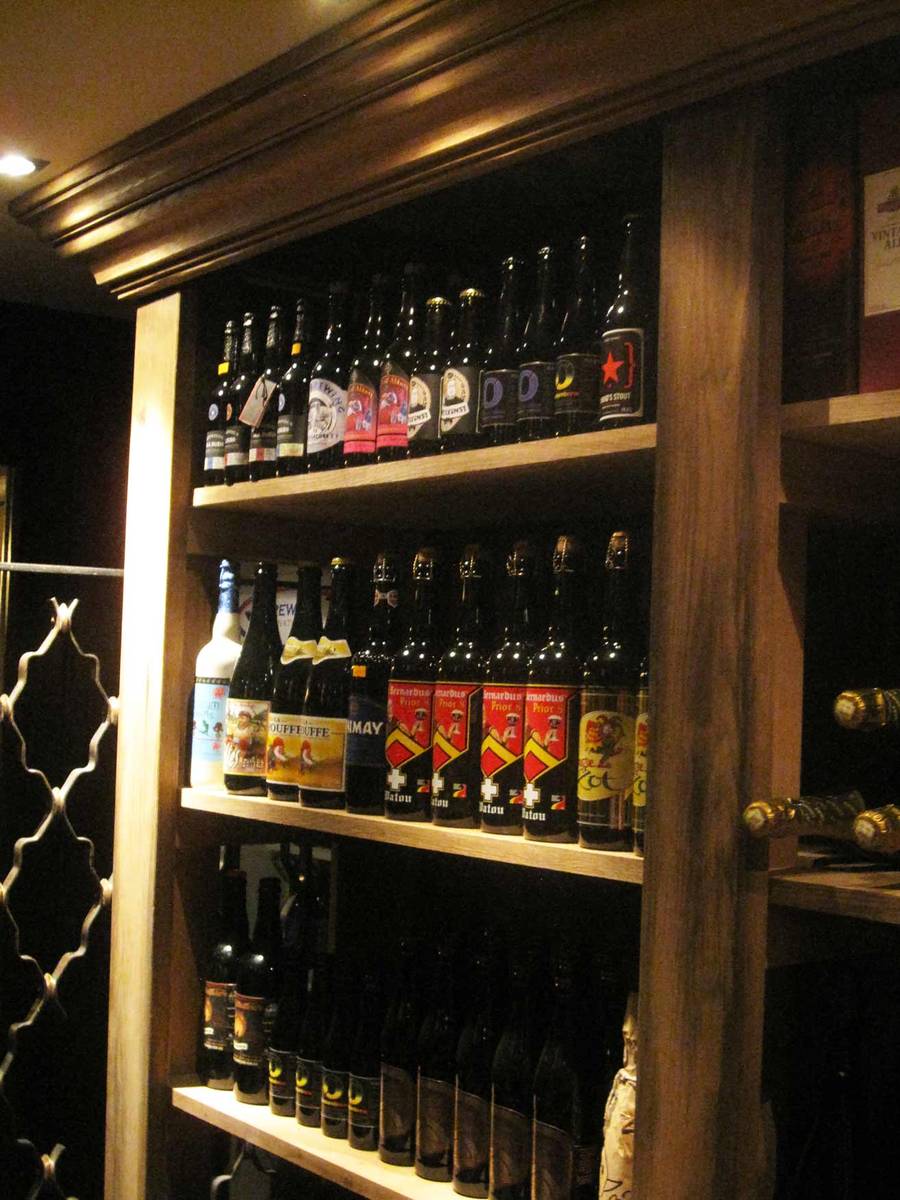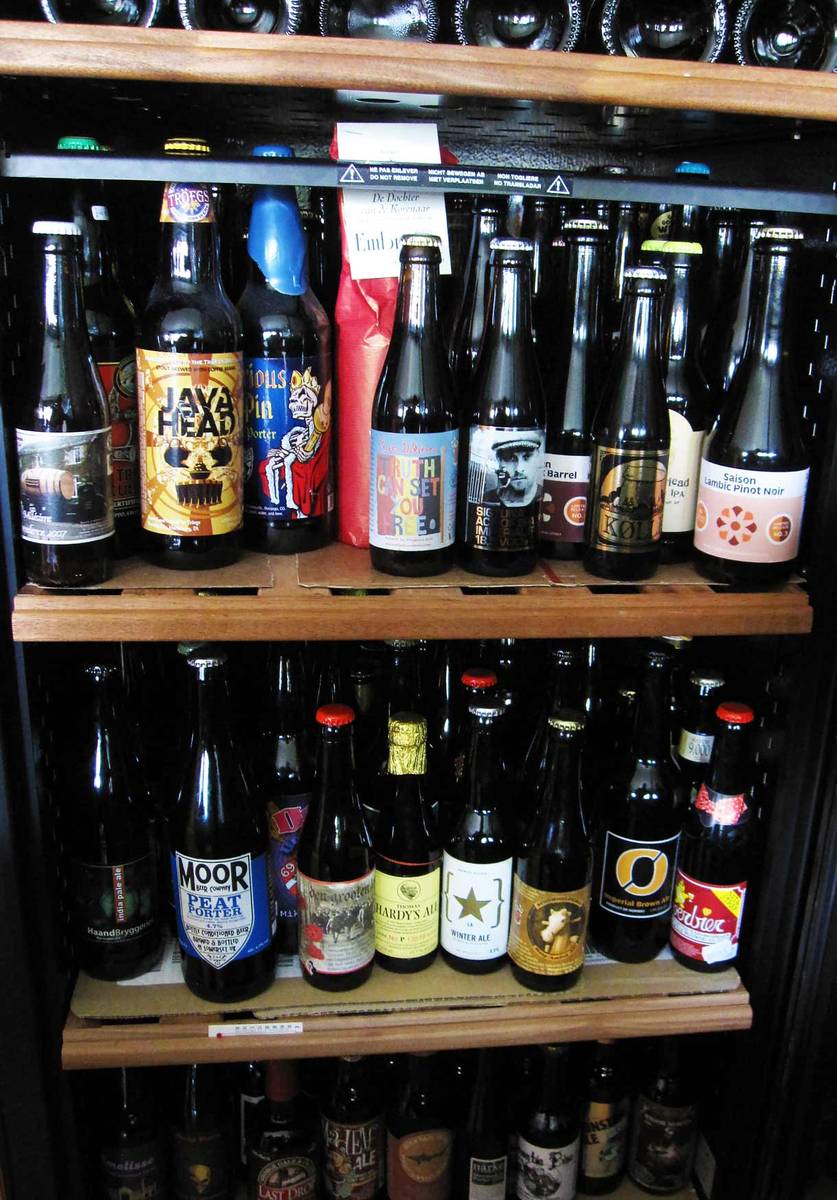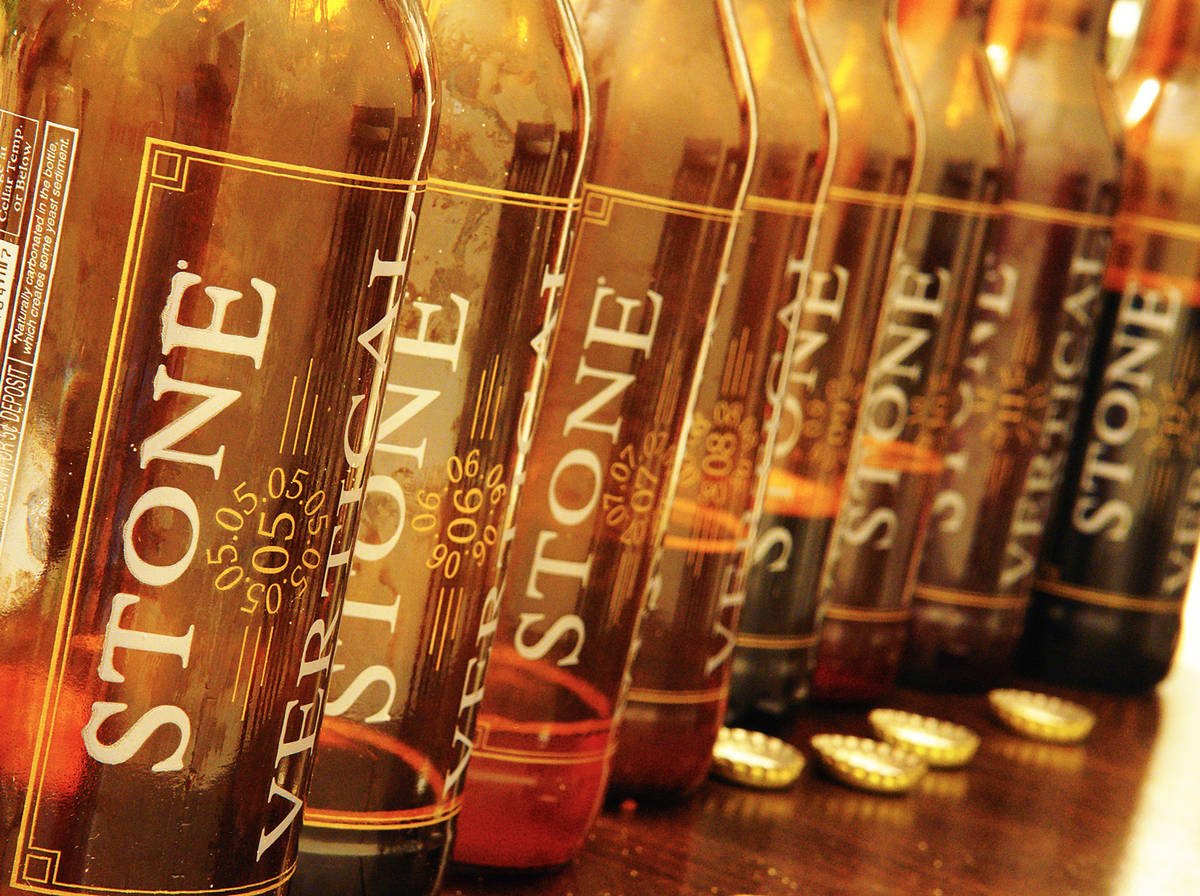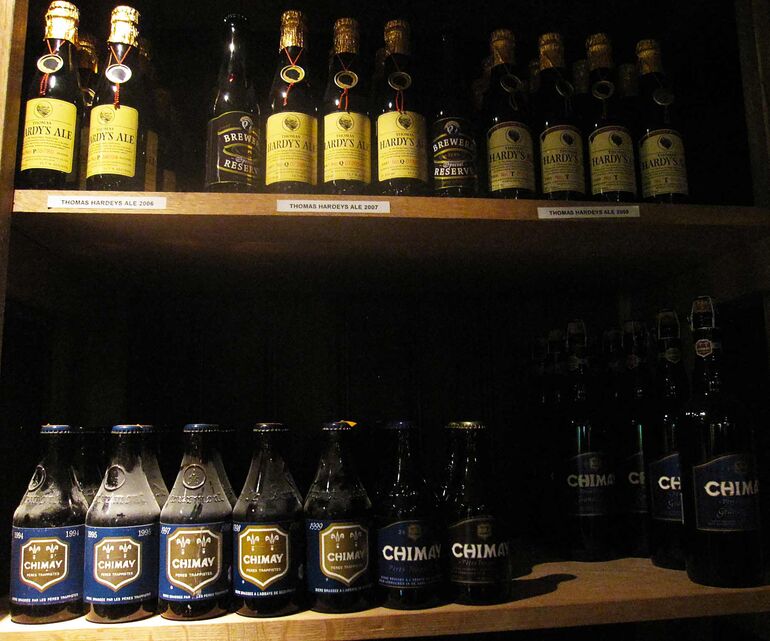Start 14-Day Trial Subscription
*No credit card required

How to Cellar Beer
If you have been involved in the craft beer community for any length of time, I’m sure you have seen or heard of someone bragging about enjoying a 2008 vintage of an extremely limited-release Barleywine. Maybe you’ve seen a post on social media of someone showing off a 15-year-old Russian Imperial Stout. You may be wondering, “Can that beer really be as good or better than it was when you bought it?” With the help of a beer cellar, the answer is yes. With proper storage and maintenance in a beer cellar, that vintage bottle of Sierra Nevada Bigfoot Barleywine will mature and change within its bottle in fascinating ways. In this article, I’ll explain how to cellar beer, why any true beer connoisseur should have a cellar and the effects cellaring has on different beer styles.
A good beer cellar does not have to be fancy. Key factors include maintaining a steady temperature, restricting the amount of light that can reach the beer and having ample storage space for the beers you want to age. If your cellar doesn’t meet these requirements, you could end up with an oxidized, light-struck mess that will leave you severely disappointed after all that time you put into aging expensive limited releases or white whale one-offs.
Temperature is the first, and probably most difficult, hurdle to address. A quality beer cellar will be able to hold a steady temperature that is cooler than standard room temperature. Different beers tend to age best at different temperatures. For example, darker and high alcohol beers like Barleywines and Russian Imperial Stouts age best at temperatures in the 50°-60°F range (10°-15°C), while sour and wild beers tend to do better in the 45°-50°F (7°-10°C) range. Most people choose to cellar in that middle range to hit the best of both worlds and try to maintain a 50°F (10°C) temperature at all times.
Most basements have a cool corner tucked away that would make a good spot for a beer cellar. If you must, you can install a small air conditioning unit in an enclosed area to maintain that cooler temperature. Refrigerators may at first sound like an ideal place to cellar beer, as they will easily keep the beer cool and provide minimal light exposure. The reality is refrigerators are not ideal for long-term storage because they are designed to pull away moisture and can lead to drying out corks. You are much better off storing those beers on shelving in a cool area and reserving that fridge for the short-term storage of beers you are serving.
The next consideration in creating a good beer cellar is light exposure: Make sure your beer cellar is not near a window or fluorescent light. Maintaining a dark environment so that your beer does not become light-struck, or “skunked,” is paramount. Even beer in brown bottles can become light-struck when being aged for long periods. Brown bottles do provide more protection than green or clear, but even a brown bottle exposed to years of light will become light-struck. Light in the ultraviolet spectrum, from either sunlight or fluorescent lighting, will react with the iso-humulones from the hops, cleaving the molecule into a sulfur-like compound that smells faintly like a skunk.

Maintaining a dark environment in your cellar so that beer does not become light-struck or “skunked” is paramount.
Third is having ample storage for your beer, and I don’t just mean having enough shelf space to store the hundreds of beers you will accumulate as your hoarding cellaring begins – vertical space is almost extremely important. A common misconception is that beer should be cellared on its side, particularly corked beers, because wine is cellared on its side. But there has been no evidence that laying beer on its side to store is beneficial. In fact, it does more harm than good. Cellaring beer on its side exposes the beer to oxidation because of increased surface area exposure as the beer bottle or can lays flat. With wine, you want some of that oxidation to occur, and long ago, corks would dry out a lot faster than they do today. Wines are still aged on their side, but beer should be stored upright.
You also want to have ample shelf space for the number of bottles you plan to cellar, as it’s much easier to store the beers in an organized manner with the right amount of space. You can separate your collection by ABV, by beer style or by brewery. Trust me when I say there should be a method to your madness – organizing your cellar will help you plan out tastings in the future and allow you to see exactly what you have on hand – or what beer styles you should focus on obtaining.
The final component that goes into a good beer cellar is humidity control, with the ideal humidity range clocking in between 50 and 70 percent. Realistically, this may be the least critical aspect of a good beer cellar, but it can make a difference. Mold growth on the cap or cork could be an issue if you are letting beer sit for 5+ years in a dark and damp environment, so investing in a dehumidifying device might make sense for your cellar. Don’t get too aggressive because you don’t want to prematurely dry any corks out but rather inhibit mold growth on or near your bottles. The level of humidity varies from basement to basement, so placing something like DampRid on one of the shelves may be a better solution than obtaining a dehumidifier. On the other hand, if you live in an overly dry climate like in the desert states, you may need to go the opposite direction and be sure you have enough humidity to prevent the corks from drying out excessively.
Aside from the conditions, another factor to consider is what you want to accomplish. Are you looking to taste the subtle differences in a beer after a specific amount of time, or are you looking to age something for years and open it for a special occasion? For the first scenario, you can age just about any beer for a year or more just to test the differences that time and oxidation yield. You can test how the beer changes as flavors mellow or intensify. But in the latter case, you want to choose something you know will be stable for an extended period of time, so you want to choose a higher-alcohol style or sour beer for that purpose.

Organizing your cellar will help you plan out tastings in the future and allow you to see exactly what you have on hand – or what beer styles you should focus on obtaining.
OK, you have your space set up. So now what? It’s beer time! Though many styles work well in a cellar, higher-ABV styles such as Imperial Stout, Baltic Porter, Old Ale, American Strong Ales and Barleywines are clear choices for long-term cellaring, especially if your cellar temperature is closer to 60°F (15°C). But some more obscure choices would be a Flanders Red or Oud Bruin, high-ABV lagers like Doppelbock, Weizenbock, wild sour ale and Lambic or Gueuze, strong Belgian ales, barrel-aged beers, and moderate-strength fruit or spiced beers. All these styles should hold up to a fair amount of aging, and you should have fun picking out the subtle changes over the course of years of cellaring.
Sour beers, Wild Ales and Brett beers are all extremely cellarable, as well, at about 55°F (13°C). If the sour beer is aged well before its release, you can expect the cellaring process to actually diminish a beer’s sourness over the years. If it’s a younger beer, the sour character will intensify as the bacteria continue to work on the complex sugars. With the Brett-fermented beers, you can expect the typical barnyard-like character to slowly dissipate over the years; however, the beer can become very dry as the yeast tends to consume everything in its path when given enough time to work.
To get you started, here is a list of beers that should be widely available to help you start on your path to filling your beer cellar. I want to make one important note before I list some good starter beers, and that is always buy a minimum of two of whatever beer you want to age: one to drink right away and one to cellar. Take some notes on it after having the first bottle, which will help you remember how it was on Day One and see how it has changed when you open the cellared one. Another suggestion is buying several of the same beer every year so that you can set up a vertical tasting of the same beer in the future to see how the age has improved or altered the beer.

Beer cellars come in handy when you're planning on enjoying a vertical tasting of the same beer, such as Stone Brewing's popular Vertical Epic annual series from the 2000s.
Photo Courtesy Flickr/George Ruiz
My first beer on the list is Bigfoot Barleywine from Sierra Nevada. This big American Barleywine is not only easy to find, but it usually has the year clearly printed on the cap so there will be no question about its age. Old Rasputin Russian Imperial Stout can stand the test of time and can also stand up to a fair amount of aging. When Black Friday rolls around, you can pick up some of Goose Island’s Bourbon County Brand Stout, which seems to put people in a frenzy every year. If you are looking to step outside the box, try cellaring some Unibroue Blonde de l’ Enfer or La Trappe Oak-Aged Quad.
With your cellar stocked, the most important question becomes: How long should beers be aged? At a minimum, you don’t want to touch the beer you are cellaring for a year. You will not notice any significant changes in character to most cellar-friendly beers for that first 12 months. From that point on, how long you want to age the beer is dependent on a couple of factors. The first is the beer’s alcoholic strength. The higher the beer’s ABV, the better it will hold up to long-term aging.
Over the course of the aging period, there is a misconception that these beers “improve.” I don’t think that term is appropriate, as the beers don’t necessarily get better. If that were true, you could take a horrible beer and age it to perfection with enough time. You can’t cellar a bad beer and make it a good beer. But there is no denying that a beer will change after being cellared. In the absence of light and in the right temperature, there will be some mellowing of character in some beers; for example, a highly hopped Double IPA will lose some of its intense hop aroma and the bitterness may become less sharp and more rounded as the malt flavors come to the foreground.
A malty Barleywine or Imperial Stout will oxidize slightly and start to give you some dark fruity tones like raisins, plums or figs. It’s also common to cellar wood- or barrel-aged beers. Some people think they develop more flavor, but what actually is happening is that the flavors are mellowing and blending over time. In most cases, the hops become less pronounced, letting the wood character come forward a bit more. Once the beer is removed from the barrel, it cannot develop more of that barrel character, but the flavors can blend and mature with time.
Now we come to the best part of all. You’ve built your cellar, you’ve selected your beers and you’ve waited patiently for a year or more as your beer aged. You can now enjoy the fruits of your labor, right? Of course! But we shouldn’t just crack one open without some sort of fanfare. You put a lot of time and investment into this project, so call a few friends and make a night of it. Plan a beer tasting using beers that have been cellared, perform a vertical tasting of Anchor Christmas Ale for a holiday treat, or share some sour or wild ales with your fellow funky-beer-loving friends.
If you are able to manage the proper conditions, you are well on your way to enjoying the merits of a good beer cellar for years to come.

Drie Fonteinen's Armand'4 Oude Geuze seasonal series is an excellent example of a complex Belgian sour that will age beautifully in a well-executed beer cellar.
All Photos Courtesy Flickr/Bernt Rostad unless noted otherwise




Comments